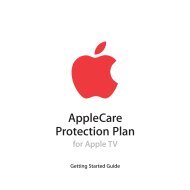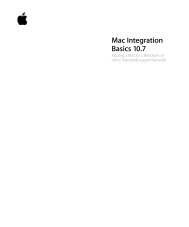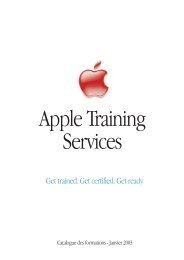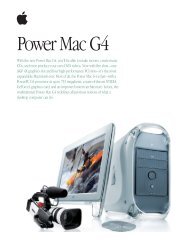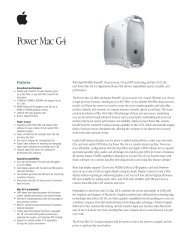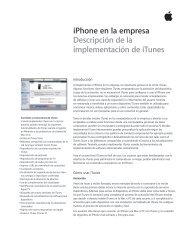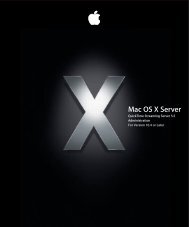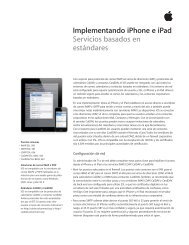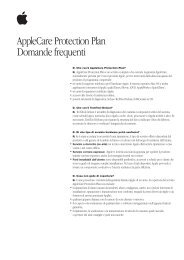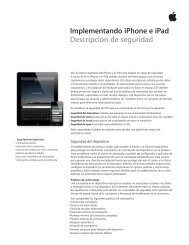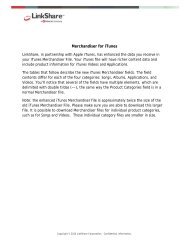In-House App Development Accelerator Guide - Apple
In-House App Development Accelerator Guide - Apple
In-House App Development Accelerator Guide - Apple
You also want an ePaper? Increase the reach of your titles
YUMPU automatically turns print PDFs into web optimized ePapers that Google loves.
iPad vs. iPhone<br />
If you’re planning to develop an app that runs on both iPhone, and iPad, you need to adapt your<br />
design to each device. While most individual UI elements are available on all devices, the overall<br />
layout usually di∂ ers dramatically. For example, users tend to expect more high-fi delity artwork in<br />
iPad apps than they do in iPhone apps. Merely scaling up an iPhone app to fi ll the iPad screen is<br />
not recommended. <strong>In</strong>stead, you need to make your iPad app engage the user in ways that take<br />
full advantage of its larger screen and capabilities. Also keep in mind that iPhone 4 supports higherresolution<br />
graphics via the Retina display, which requires doubling the artwork resolution. There<br />
are also di∂ erences in the available gestures and the ways that rotation is handled. The devices also<br />
support di∂ erent UI elements. For example, popover controllers or split view controllers are unique<br />
to iPad.<br />
Universal <strong>App</strong>s<br />
The iOS SDK supports the development of Universal applications. A Universal app is optimized to run<br />
on all iOS devices. It’s essentially an iPhone app and an iPad app built as a single binary.<br />
A Universal app can determine which device it’s running on and provide the best experience for that<br />
device. Well-designed Universal apps leverage the device’s unique hardware features, provide the right<br />
choice of user interface elements, and use only the functionality that’s supported by that device.<br />
When designing a Universal app for iOS, it’s important to think about how to separate user interaction<br />
from the underlying application code. The iOS SDK’s classes and APIs leverage a model-view-controller<br />
(MVC) paradigm that encourages a clean separation of your app data and logic from the views that<br />
are used to present that data. For example, building your UI using <strong>In</strong>terface Builder gives your project<br />
this type of fl exibility (see next chapter).<br />
The fi rst step in making a Universal app is to create user interface designs for each of the form<br />
factors—one design for iPad devices and another for iPhone/iPod touch devices. Much of your design<br />
will be a∂ ected by the features you want to expose in each of the di∂ erent form factors. Think about<br />
how users might use orientation or gestures di∂ erently. Consider each device’s hardware capabilities,<br />
such as the camera. Di∂ erences in how your users use the device should inform how you approach a<br />
consistent design for each and where you might need conditional coding.<br />
Planning • Design • <strong>Development</strong> • Deployment<br />
“ iPad defi nitely gave us more real estate, which we<br />
wanted to take advantage of. That was key for us. It<br />
was not, let’s just make everything three times as big,<br />
have that many more pixels, but let’s really make sure<br />
we’re properly using that space…If we’re going to<br />
translate one from an iPhone to an iPad, we re-think it.<br />
Probably 60 percent of the core functionality remains,<br />
but what else can we do? How can we make it more<br />
usable, how can we have less clicks, or less screens to<br />
get to everything?”<br />
—James Blomberg, General Electric<br />
15



